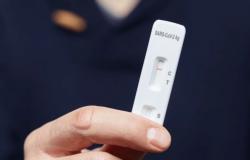People with photosensitive epilepsy could benefit from a prototype glasses whose lenses block wavelengths known to cause seizures in some people.
In a study published in Cell Reports Physical Science , researchers from the University of Glasgow and the University of Birmingham have developed a prototype liquid crystal lens that they say could help people with photosensitive epilepsy .
The lenses are controlled by very small temperature changes that can be built into the lens, and when activated can block more than 98% of light in the 660-720 nm wavelength range, known to affect the greatest number of people suffering from photosensitive epilepsy.
Zubair Ahmed, professor of neuroscience at the University of Birmingham and co-author of the study, said: “This paper demonstrates the potential of using liquid crystal lenses which can be modulated to cut off specific wavelengths of the light.
« The prototype shows how a discrete circuit installed in the frame of a pair of glasses can power these lenses and be used in situations where certain wavelengths of light are likely to trigger a seizure, such as while watching television or while playing on the computer. The circuit heats the lenses to a temperature comfortable for wearers, while eliminating more than 98% of light at wavelengths likely to cause seizures ».
Rami Ghannam, professor of electronics at the University of Glasgow and lead author of the study, said: “ This project shows how collaboration between different disciplines such as engineering, neuroscience and mathematics can lead to potential discoveries that can transform the lives of patients with various diseases. ».
« We are currently developing this prototype in order to improve its performance before submitting it to human studies. ».
The authors note that the current prototype worked in rooms with temperatures no higher than 26°C, and that further adjustments to the technology would be necessary to use it in warmer environments. The team also notes that the time it takes for the prototype to heat up and cool down can be improved.
Source : U. Glasgow
Health





